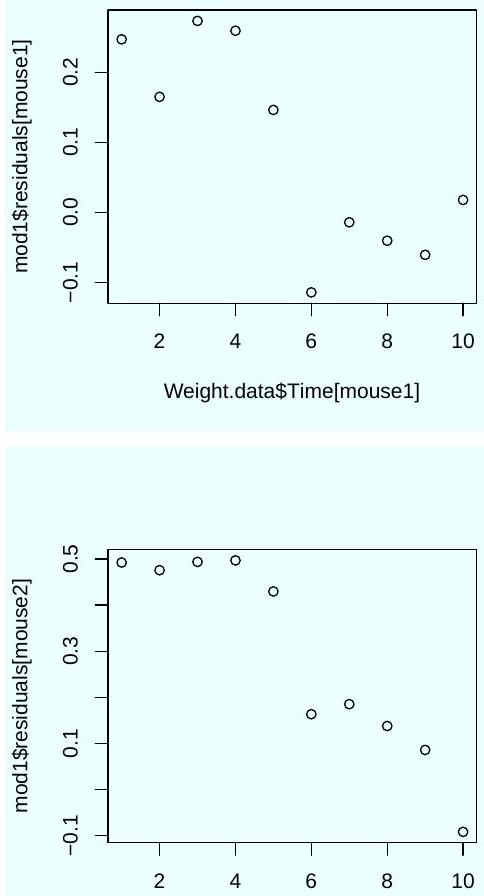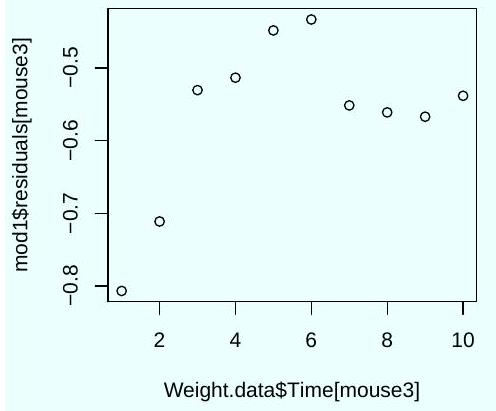A scientist is studying the effects of a drug on the weight of mice. Forty mice are divided into two groups, control and treatment. The mice in the treatment group are given the drug, and those in the control group are given water instead. The mice are kept in 8 different cages. The weight of each mouse is monitored for 10 days, and the results of the experiment are recorded in the data frame Weight.data. Consider the following R code and its output.
head (Weight.data)
Time Group Cage Mouse Weight
11 Control 1 1 24.77578
22 Control 1 1 24.68766
33 Control 1124.79008
44 Control 1124.77005
55 Control 1 1 24.65092
66 Control 1124.38436
>mod1=lm (Weight ∼ Time*Group + Cage, data=Weight. data)
>summary(mod1)
Call:
lm (formula = Weight Time ∗ Group + Cage, data = Weight. data)
Residuals:
Min 1Q Median 3Q Max
−1.36903−0.33527−0.017190.388071.24368
Coefficients:
Estimate Std. Error t value Pr(>∣t∣)
Time −0.0060230.012616−0.4770.63334
GroupTreatment 0.3218370.1219932.6380.00867∗
Cage2 −0.4002280.095875−4.1743.68e−05∗∗∗
Cage3 0.2869410.1024942.8000.00537∗
Cage4 0.0075350.0958750.0790.93740
Cage6 0.1247670.1255300.9940.32087
Cage8 Time:GroupTreatment −0.295168−0.1735150.1255300.017842−2.351−9.7250.01920∗<2e−16∗∗∗
Time: GroupTreatment −0.1735150.017842−9.725<2e−16∗∗∗
Signif. codes: 0 '' 0.001 '' 0.01 '' 0.05 '., 0.1 ', 1
Residual standard error: 0.5125 on 391 degrees of freedom
Multiple R-squared: 0.5591, Adjusted R-squared: 0.55
F-statistic: 61.97 on 8 and 391 DF, p-value: <2.2e−16
Which parameters describe the rate of weight loss with time in each group? According to the R output, is there a statistically significant weight loss with time in the control group?
Three diagnostic plots were generated using the following R code. 
Weight.data$Time[mouse1]


Weight.data$Time[mouse2]

Based on these plots, should you trust the significance tests shown in the output of the command summary (mod1)? Explain.



